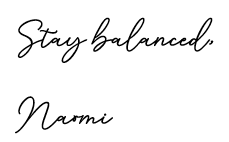How Your Attachment Style Shapes Your Success at Work

Have you ever considered how your attachment style might influence your work life? While attachment styles are often discussed in relation to romantic relationships, they extend far beyond that, shaping how we connect with people in all areas of life—including our professional environments.
Attachment style refers to the way we form emotional bonds and interact with others, patterns deeply rooted in our early experiences. These styles—secure, anxious, avoidant, and disorganized—affect how we navigate workplace dynamics, manage stress, and respond to feedback. Understanding your attachment style can unlock new levels of self-awareness and improve how you relate to colleagues and handle the pressures of professional life.
The Four Attachment Styles
1. Secure Attachment:
Individuals with secure attachment are typically comfortable with feedback, confident in their abilities, and able to form healthy relationships at work. They trust others, communicate openly, and manage stress well. This balanced approach often helps them excel in leadership roles and collaborative environments.
2. Anxious Attachment:
People with anxious attachment may find themselves frequently seeking reassurance and fearing rejection or failure. They may worry excessively about how they are perceived and feel insecure even when they perform well. In the workplace, this can lead to heightened stress, overanalyzing feedback, and difficulty setting boundaries.
3. Avoidant Attachment:
Those with avoidant attachment tend to keep emotional distance from others, preferring self-reliance over collaboration. They may struggle with teamwork, appear dismissive of feedback, and avoid building close professional relationships. This detachment can hinder their ability to fully connect with colleagues or grow in their roles.
4. Disorganized Attachment:
A mix of both anxious and avoidant traits, individuals with disorganized attachment often find it difficult to manage relationships and regulate emotions. They may crave connection but also fear it, leading to unpredictable behaviors at work. Navigating feedback, team dynamics, and stress can be particularly challenging for them.

How to Thrive in the Workplace by Understanding Your Attachment Style
Recognizing your attachment style is an empowering first step toward improving your professional relationships and work experience. Whether your style is secure, anxious, avoidant, or disorganized, the following strategies can help you thrive:
1. Develop Self-Awareness
Self-awareness is the foundation for personal and professional growth. Take time to reflect on how your attachment style influences your thoughts, behaviors, and interactions at work. For example, if you have an anxious attachment, do you find yourself seeking validation or worrying excessively about others’ perceptions? If you’re avoidant, do you struggle to ask for help or share your thoughts? Understanding these patterns allows you to make intentional changes in how you relate to colleagues and manage stress.
2. Build Confidence in Your Strengths
If you have an anxious attachment, focus on internal validation by reminding yourself of your achievements and strengths. Celebrating your skills and past successes can reduce your reliance on external approval and help you feel more secure in your role.
For avoidant types, building confidence may mean learning that asking for feedback or support isn’t a weakness—it’s a strength that can help you grow.
3. Reframe Feedback as Growth
Feedback can be a source of anxiety, especially for those with an anxious attachment style. Try reframing it as an opportunity for growth rather than criticism. Take time to process feedback and remember that it’s intended to help you improve, not diminish your value.
For avoidant individuals, feedback might feel uncomfortable, as it challenges the idea of self-reliance. Embrace feedback as a tool to enhance your skills and career development.
4. Set Healthy Boundaries
Boundaries are essential, particularly for those with anxious or disorganized attachment styles, who may overextend themselves in an effort to gain approval. Practice saying “no” when necessary and set realistic expectations for both yourself and others. Healthy boundaries prevent burnout and create balance between work and personal well-being.
Avoidant individuals, on the other hand, may need to work on opening up and engaging more with colleagues, while still maintaining boundaries that protect their emotional space.
5. Practice Stress-Relief Techniques
Attachment styles can intensify under stress, especially in fast-paced work environments. Incorporate stress-relief techniques like mindfulness, breathing exercises, or physical activity into your routine. These practices can help regulate emotional reactions and foster resilience in the face of workplace challenges.
By understanding your attachment style and actively working to adapt your behaviors, you can cultivate healthier workplace relationships, build self-confidence, and manage stress more effectively. Whether through self-reflection, boundary-setting, or seeking professional support through therapy, you have the tools to thrive in your career—no matter your attachment style.
